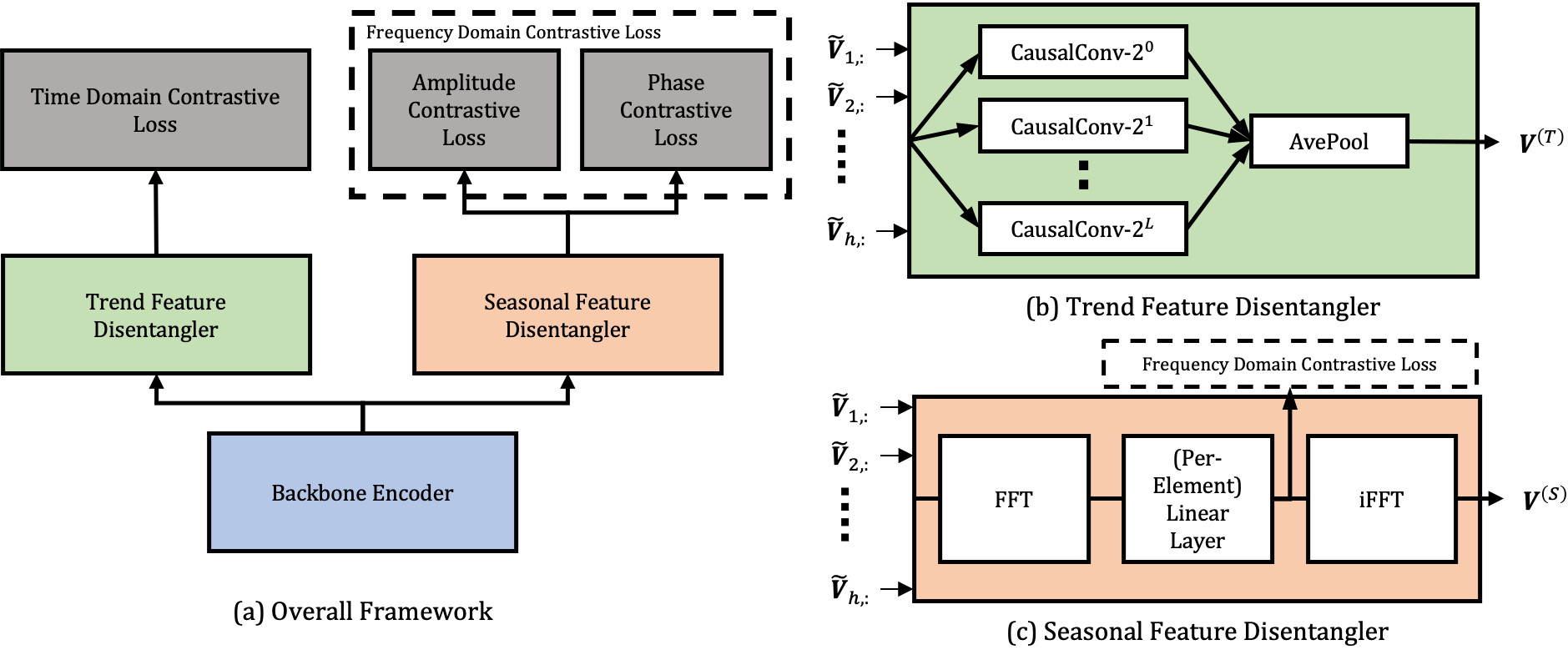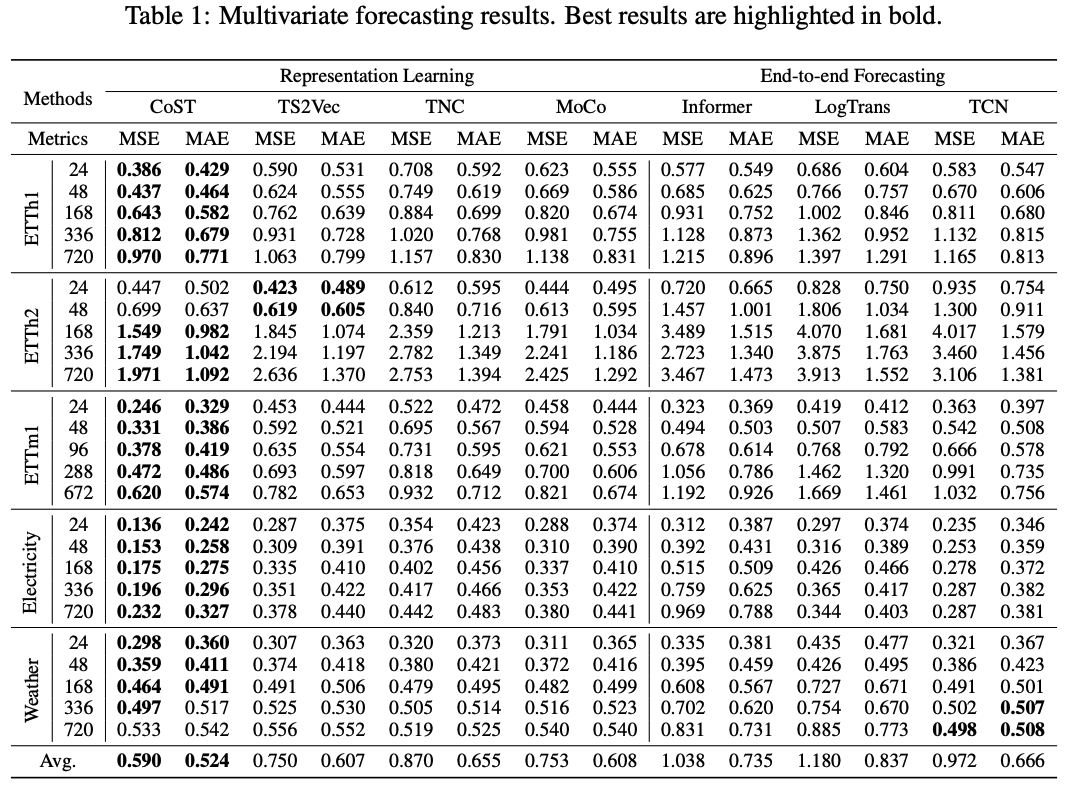CoST: Contrastive Learning of Disentangled Seasonal-Trend Representations for Time Series Forecasting (ICLR 2022)

Figure 1. Overall CoST Architecture.
Official PyTorch code repository for the CoST paper.
- CoST is a contrastive learning method for learning disentangled seasonal-trend representations for time series forecasting.
- CoST consistently outperforms state-of-the-art methods by a considerable margin, achieveing a 21.3% improvement in MSE on multivariate benchmarks.
Requirements
- Install Python 3.8, and the required dependencies.
- Required dependencies can be installed by:
pip install -r requirements.txt
Data
The datasets can be obtained and put into datasets/ folder in the following way:
- 3 ETT datasets should be placed at
datasets/ETTh1.csv,datasets/ETTh2.csvanddatasets/ETTm1.csv. - Electricity dataset placed at
datasets/LD2011_2014.txtand runelectricity.py. - Weather dataset (link from Informer repository) placed at
datasets/WTH.csv - M5 dataset place
calendar.csv,sales_train_validation.csv,sales_train_evaluation.csv,sales_test_validation.csvandsales_test_evaluation.csvatdatasets/and run m5.py.
Usage
To train and evaluate CoST on a dataset, run the script from the scripts folder: ./scripts/ETT_CoST.sh (edit file permissions via chmod u+x scripts/*).
After training and evaluation, the trained encoder, output and evaluation metrics can be found in training/<DatasetName>/<RunName>_<Date>_<Time>/.
Alternatively, you can directly run the python scripts:
python train.py <dataset_name> <run_name> --archive <archive> --batch-size <batch_size> --repr-dims <repr_dims> --gpu <gpu> --eval
The detailed descriptions about the arguments are as following:
| Parameter name | Description of parameter |
|---|---|
| dataset_name | The dataset name |
| run_name | The folder name used to save model, output and evaluation metrics. This can be set to any word |
| archive | The archive name that the dataset belongs to. This can be set to forecast_csv or forecast_csv_univar |
| batch_size | The batch size (defaults to 8) |
| repr_dims | The representation dimensions (defaults to 320) |
| gpu | The gpu no. used for training and inference (defaults to 0) |
| eval | Whether to perform evaluation after training |
| kernels | Kernel sizes for mixture of AR experts module |
| alpha | Weight for loss function |
(For descriptions of more arguments, run python train.py -h.)
Main Results
We perform experiments on five real-world public benchmark datasets, comparing against both state-of-the-art representation learning and end-to-end forecasting approaches. CoST achieves state-of-the-art performance, beating the best performing end-to-end forecasting approach by 39.3% and 18.22% (MSE) in the multivariate and univariate settings respectively. CoST also beats next best performing feature-based approach by 21.3% and 4.71% (MSE) in the multivariate and univariate settings respectively (refer to main paper for full results).
FAQs
Q: ValueError: Found array with dim 4. StandardScaler expected <= 2.
A: Please install the appropriate package requirements as found in requirements.txt, in particular, scikit_learn==0.24.1.
Q: How to set the --kernels parameter?
A: It should be list of space separated integers, e.g. --kernels 1 2 4. See the scripts folder for further examples.
Acknowledgements
The implementation of CoST relies on resources from the following codebases and repositories, we thank the original authors for open-sourcing their work.
Citation
Please consider citing if you find this code useful to your research.
@inproceedings{
woo2022cost,
title={Co{ST}: Contrastive Learning of Disentangled Seasonal-Trend Representations for Time Series Forecasting},
author={Gerald Woo and Chenghao Liu and Doyen Sahoo and Akshat Kumar and Steven Hoi},
booktitle={International Conference on Learning Representations},
year={2022},
url={https://openreview.net/forum?id=PilZY3omXV2}
}
